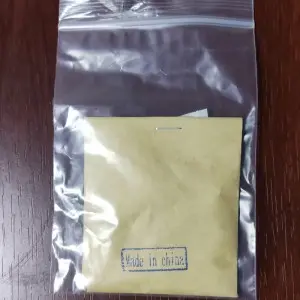Dek . 11, 2024 09:52 Back to list
Role of Pear Pollen in Agricultural Production and Crop Pollination Techniques
The Function of Pear Pollen in Agricultural Systems
Pear pollen plays a crucial role in the reproductive processes of pear trees (Pyrus spp.), which are integral to fruit production in agriculture. Understanding the function of pear pollen not only enhances our knowledge of the biology of these plants but also informs better agricultural practices that can lead to increased yields and improved fruit quality. This article delves into the functions of pear pollen, its role in pollination, and its implications for agriculture.
The Biology of Pear Pollen
Pollen is a fine powder that contains the male gametes of flowering plants. In the case of pear trees, pollen grains are produced in the anthers of flowers and are transported to the stigma of the same or different pear flowers for fertilization to occur. Pear pollen is typically characterized by its small size and lightweight, enabling it to be dispersed by wind or pollinators, such as bees. The viability and compatibility of pear pollen are essential factors that determine successful fertilization and seed development.
Pollination Mechanism
Pollination in pear trees can occur via self-pollination, where pollen from the same tree fertilizes its ovules, or cross-pollination, which involves the transfer of pollen from one tree to another. Although some pear varieties can set fruit through self-pollination, cross-pollination is often more effective and leads to better fruit set and quality. This is particularly true for many European and Asian pear varieties, which benefit from pollen from different cultivars to enhance genetic diversity.
The mechanism of pollination begins when pollinators, attracted by the flowers' fragrance and color, visit pear blossoms. As they collect nectar, pollen grains stick to their bodies and are transported to the stigmas of other flowers. This transfer initiates the process of fertilization, where the sperm cells from the pollen grain travel down the style to the ovary, leading to fruit formation.
Importance of Pollen for Fruit Quality
The quality and quantity of pear fruit are significantly influenced by the effectiveness of pollination. Proper pollination results in larger, more uniformly shaped fruit with better flavor profiles and higher sugar content. Conversely, poor pollination can lead to small, misshapen fruits or even fruit drop, resulting in economic losses for growers.
function of pear pollen factory

Moreover, the genetic diversity introduced by cross-pollination can enhance the resilience of pear trees against pests, diseases, and changing environmental conditions. This diversity can lead to the cultivation of varieties that are better adapted to local climates and have improved resistance to specific agricultural challenges.
Practical Implications for Pear Production
To optimize the benefits of pear pollen in agricultural systems, growers should consider the following
1. Selection of Compatible Varieties Choosing compatible cross-pollinating varieties can enhance fruit set and improve overall yield. Growers need to be aware of which cultivars produce viable pollen and can effectively fertilize one another.
2. Promotion of Pollinator Health Encouraging bee populations and other pollinators is vital for effective pollination. This can be achieved by planting nectar and pollen-rich flowers nearby, reducing pesticide use, and providing habitats for pollinators.
3. Timing of Flowering Understanding the flowering times of different cultivars is crucial. Growers can stagger plantings to ensure that compatible varieties bloom simultaneously, maximizing the chances of successful cross-pollination.
4. Monitoring Pollen Viability Regular assessment of pollen viability can help determine the best times for pollination and inform management practices.
Conclusion
The role of pear pollen in agricultural systems is multifaceted and integral to the successful production of high-quality fruit. By understanding the functions of pear pollen, growers can adopt practices that enhance pollination and ultimately contribute to more sustainable and productive pear orchards. The interplay between biology and agriculture highlights the importance of maintaining healthy ecosystems to support the intricate relationships between plants and their pollinators. Through informed management and practices, the agricultural productivity of pear trees can be significantly improved, benefiting both growers and consumers alike.
-
Premium Cherry Pollen for Pollination Reliable Supply for Cherry Orchard Factories & Manufacturers
NewsJul.05,2025
-
Premium Palm Tree Pollen Supplier - High-Quality Fruit Tree Varieties for Plum Pollen Manufacturers & Quotes
NewsJul.05,2025
-
Premium Juniper Tree Pollen for Sale – High-Quality Juniper & Fruit Tree Varieties for Plum Pollen Manufacturers
NewsJul.05,2025
-
Premium Rhododendron Pollen Supplier - High Quality Apricot Pollen from Trusted Factories
NewsJul.04,2025
-
Premium Cottonwood Pollen for Sale High-Quality Cottonwood Tree & Apricot Flower Pollen Suppliers
NewsJun.24,2025
-
Artificial Pollination Solutions for Pear Trees Auxiliary Pollination Services & Pricelist
NewsJun.10,2025